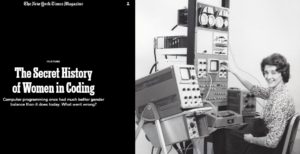
Photo by rawpixel.com on Pexels.com
This is one of the questions we ask in Nordwit in our rural study in Norway.
Previous research is ambivalent about whether women need female role models or not in a male dominated field.
“The act of categorization does not involve a positive test”, West and Zimmerman explain, but rather an “if-can” test: ‘if people can be seen as members of relevant categories, then categorize them that way’” (1987).
Our study of women in IT work in Norway has documented that having female role models from IT had not been important for their career in IT, like one of them say: “There haven’t been anyone before us” in this field.
In a forthcoming chapter we present our findings as a model reflecting the informants’ responses in relation to the lack of female role models in IT. They rather point to an empty space where the female role models should have been: a “void” (like above, or feeling alone), or towards substitute female role models (for instance a female prime minister), or they suggest alternative supporters of both genders (for instance partners and mentors).
One of our reviewers for this chapter was eager to point out that women might not want or need female role models. Which is indeed true. But what does that really mean? That female role models are irrelevant? According to our study: no. It rather means that women in the male dominated field of IT are in danger of failing the “if-can” test – like Åsa Cajander’s post also indicates. The answer is, we suggest, not to assume that women don’t want or need female role models, but rather that when facing a professional field that is so tightly connected to the presence of men and masculine symbols, there is a “doing gender” going on in parallel with “doing IT” – and therefore it is difficult to identify female role models that reflect this profession, as women risk failing the (masculine) “doing gender” part of IT.

